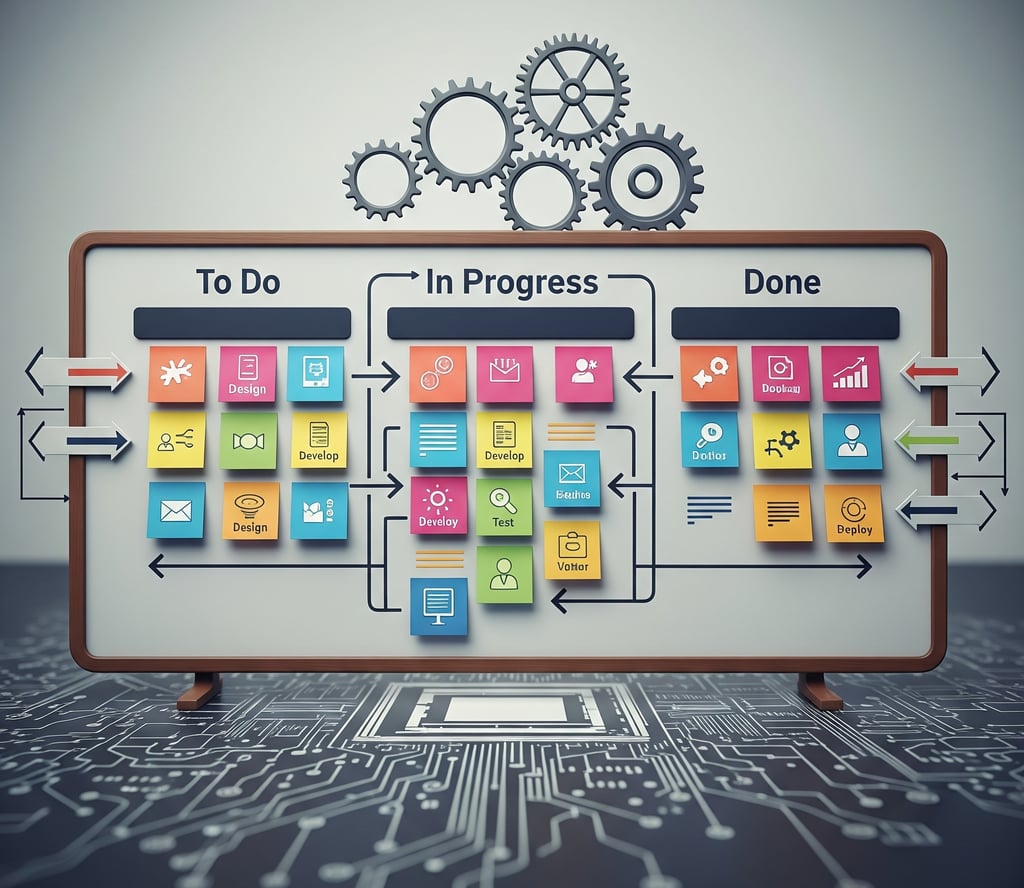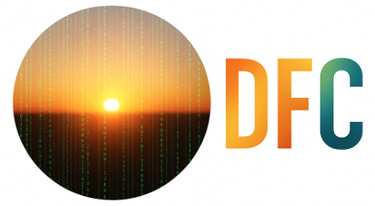Kanban: The Simplest Way to Visualize and Organize Your Work
Visualize your work to better understand the flow, avoid bottlenecks, and deliver more value.
TOOLS
8/28/20254 min read


The Kanban Method: How to Simplify Workflows and Boost Your Team's Efficiency
In a world where complexity and information overload are the norm, finding simple yet effective ways to manage work is a constant challenge. The Kanban method, with its roots in the Japanese automotive industry, has emerged as a powerful and intuitive solution for visualizing, organizing, and optimizing any workflow. Far from being just a tool for software developers, Kanban is a visual management philosophy that can be applied across marketing, sales, HR teams, and even in personal life. If your team is seeking more clarity, fewer bottlenecks, and greater efficiency, Kanban might be the missing compass to navigate the daily chaos. Furthermore, adopting this method can bring not only immediate, visible benefits but also a long-term cultural shift that promotes collaboration and consistent delivery of results in dynamic work environments.
What Is Kanban and How Does It Work?
The term "Kanban" means "visual card" or "signal" in Japanese. The essence of the method is to create a visual system that represents the workflow of a project or process, from start to completion. This is done through a Kanban board, which is usually divided into columns representing the stages of work. This simple structure allows everyone on the team to clearly see the status of tasks and the current workload, reducing uncertainty and increasing accountability.
The three most basic columns are:
To Do: Tasks that still need to be started. It's important for this column to contain clearly defined and prioritized tasks so everyone knows what the next step should be.
In Progress (WIP - Work in Progress): Tasks currently being executed. This column must reflect the team's current capacity, avoiding unnecessary overload that could lead to delays.
Done: Tasks that have been completed. Celebrating achievements in this column not only boosts team morale but also provides a clear view of the results achieved.
Each task is represented by a Kanban card (which can be a physical post-it or a digital item in a software tool). As the task progresses through the workflow, the card is moved from one column to the next. This movement is not just visual; it also involves team collaboration, with discussions about priorities and adjusting expectations, ensuring everyone is aligned.
The Foundational Principles of Kanban
The power of Kanban lies in its few, yet powerful principles:
Visualize the Workflow: Making the work visible is the first step to managing it. The Kanban board provides a clear and instant view of the status of all tasks, making it easier to spot areas that need attention.
Limit Work in Progress (WIP): This is the most crucial principle. By limiting the number of tasks that can be "In Progress" simultaneously, Kanban forces the team to focus on finishing tasks before starting new ones. This reduces context switching, prevents bottlenecks, and improves quality.
Manage Flow: Once work is visible and WIP limits are set, the team can focus on optimizing the flow, identifying and removing obstacles. This promotes an environment of continuous improvement.
Make Policies Explicit: Clearly defining the rules for moving a card from one column to another (e.g., "a task can only move to 'Done' if it has been reviewed by the manager") ensures consistency and shared understanding.
Improve Collaboratively (Using Models and Feedback): Kanban is not static. It encourages continuous improvement through observing and adjusting the rules and workflow. Regular retrospective sessions can be implemented to discuss what worked and what didn't, fostering a cycle of constant learning.
Advantages of Kanban for Your Team
Adopting Kanban can bring a range of tangible benefits:
Clarity and Transparency: Everyone on the team knows exactly what is being worked on, who is responsible, and what the status is. This results in greater engagement and visibility.
Enhanced Focus: By limiting work in progress, distractions decrease, and the team concentrates on delivering value. This focus can significantly boost productivity.
Rapid Bottleneck Detection: A buildup of cards in a specific column indicates a problem in the workflow that needs to be addressed. This visibility allows for quick problem correction before issues escalate.
Greater Predictability: With a more stable flow, it's easier to estimate when tasks will be completed. This predictability improves planning and resource allocation capabilities.
Waste Reduction: It prevents the creation of unnecessary work or constant task interruption, saving time and resources.
How to Implement Kanban in Your Team (Simple Steps)
You don't need a major revolution to start using Kanban. Small changes can lead to big improvements in workflow and team efficiency.
Start with What You Do Now: Don't drastically change processes initially. Simply visualize the current workflow on the board. This gradual approach quickly identifies areas for improvement.
Design the Kanban Board: This can be a physical whiteboard with sticky notes or a digital tool (Trello, Asana, Jira). Create the columns that represent your work stages.
Add the Cards: Write each task on a card and place it in the appropriate column. Each card should contain relevant details and assigned owners, promoting accountability.
Establish WIP Limits: Start with limits that make sense for your team. If there are 3 people on the team, perhaps the "In Progress" limit should be 2 or 3 tasks. Adjust as the team adapts.
Move the Cards: As work progresses, move the cards. Hold quick daily stand-up meetings to sync the team and identify blockages, encouraging open communication.
Analyze and Adapt: Regularly discuss with the team what is working and what can be improved in the flow or the rules. Feedback is a core pillar of Kanban and should be constantly sought and integrated.
Conclusion: Simplify to Achieve Efficiency
Kanban is more than a set of tools; it's a visual management mindset that places simplicity and efficiency at the core of work. By making the task flow transparent and limiting work in progress, it empowers teams to deliver more value with less stress. This approach can transform the dynamics of teams and companies, leading to more integrated collaboration and more predictable results. If your business is looking for a way to bring order to chaos, improve collaboration, and boost productivity without the complexity of more robust agile methodologies, Kanban is the ideal starting point.
What task will you visualize and move to "Done" on your Kanban board today?
Innovation
Technology and Digital Transformation.
contact us
Apprenticeship
digitalfuturechanges@gmail.com
© 2025. All rights reserved.
